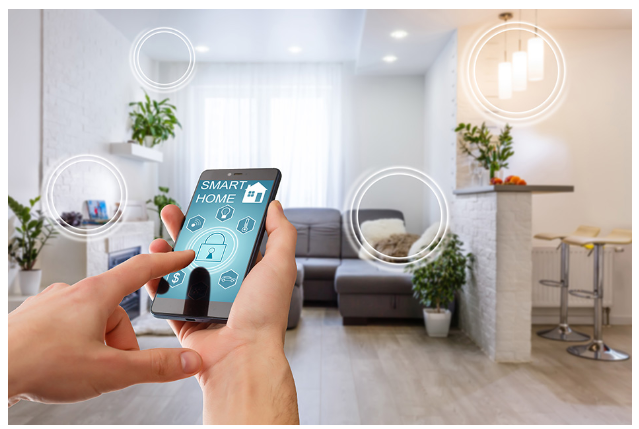Leveraging Smart Home Technology to Detect and Prevent Fire Hazards
In today’s fast-paced world, technology continuously evolves to enhance our quality of life. One of the most significant advancements in recent years is the integration of smart home technology into our daily routines. While smart homes have revolutionized convenience and energy efficiency, their role in safety, particularly in fire prevention and detection, is becoming increasingly vital. Ensuring that your smart home systems are up to date with proper Fire Alarm Certification can further enhance their effectiveness. This blog explores how leveraging smart home technology, along with maintaining certification for your fire alarms, can help detect and prevent fire hazards, ensuring a safer living environment for you and your loved ones.
Understanding Smart Home Technology
Before delving into how smart home technology can aid in fire safety, it’s essential to understand what makes a home “smart.” Smart home technology refers to devices and systems that are interconnected and can be controlled remotely via the internet. These devices often communicate with each other, creating a network that can automate and manage various aspects of a home.
The Role of Smart Smoke Detectors
Traditional smoke detectors are crucial for fire safety, but they have limitations. They often rely on a single sensor to detect smoke, which can sometimes lead to false alarms or delayed notifications. Smart smoke detectors, however, are equipped with advanced features that enhance their effectiveness.
These devices are connected to your home’s Wi-Fi network, allowing them to send real-time alerts to your smartphone or other connected devices. In the event of a fire, you receive immediate notifications, even if you’re not at home. Some smart smoke detectors also have built-in cameras or microphones to help identify the source of the alarm, providing more information for emergency responders.
Integration with Home Automation Systems
One of the key advantages of smart smoke detectors is their ability to integrate with other smart home systems. For example, when a smart smoke detector senses smoke, it can trigger other devices to take action. It might turn on all the lights in the house, unlock smart locks to facilitate a quick exit, or even activate a smart sprinkler system if your home is equipped with one.
This level of integration ensures a coordinated response to fire hazards, making it easier for you and your family to evacuate safely and quickly. It also allows for a more efficient response from emergency services by providing them with real-time information about the situation.
Smart Fire Extinguishers and Sprinkler Systems
While smart smoke detectors play a crucial role in detecting fires, smart fire extinguishers and sprinkler systems can help in preventing fires from escalating. Smart fire extinguishers are designed to be more user-friendly and effective. They often come with built-in sensors that detect heat and flames, providing an alert when action needs to be taken.
In addition, smart sprinkler systems can be programmed to activate automatically in the event of a fire. These systems can be controlled remotely, allowing you to adjust settings based on real-time conditions or even shut them off if the situation is resolved without the need for water. This not only helps in controlling the fire but also prevents water damage to your home.
Monitoring and Maintenance
Regular maintenance is crucial for fire safety, and smart home technology can assist in keeping your devices in optimal condition. Many smart smoke detectors and fire safety devices come with features that monitor their own performance. They can alert you if a battery needs changing or if the device requires maintenance.
Additionally, these devices can provide you with historical data and analytics on smoke and heat levels, helping you identify any potential issues before they become serious problems. This proactive approach to maintenance ensures that your fire safety devices are always ready when you need them.
Voice Assistants and Fire Safety
Voice assistants like Amazon Alexa, Google Assistant, and Apple’s Siri are more than just helpful gadgets; they can also play a role in fire safety. By integrating your smart home fire safety devices with your voice assistant, you can use voice commands to control or check the status of your smoke detectors and other safety equipment.
For instance, you can ask your voice assistant if the smoke detectors are functioning correctly or if there have been any recent alerts. This hands-free approach can be particularly useful during an emergency when you need to quickly assess the situation.
Conclusion
Leveraging smart home technology for fire safety represents a significant advancement in how we protect our homes and loved ones. Smart smoke detectors, fire extinguishers, sprinkler systems, and voice assistants work together to create a comprehensive safety network. These technologies offer real-time alerts, automated responses, and enhanced monitoring capabilities that traditional systems cannot match.
As we continue to integrate more technology into our lives, focusing on safety innovations like these is crucial. By adopting smart home fire safety solutions, we not only enhance our ability to detect and respond to fire hazards but also contribute to a safer living environment. Embracing these advancements ensures that we are better prepared to prevent and manage fire hazards, ultimately providing peace of mind in our homes, If you want to stay updated with posts like this, please follow us on BIGNEWSNETWORK.


